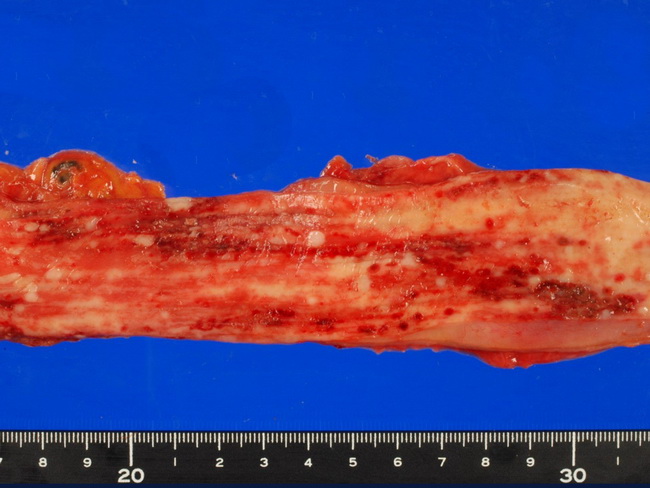Herpes Esophagitis : Introduction


Comments:
Some of the common causes of infectious esophagitis are candida, herpes simplex virus, and cytomegalovirus. The patients are usually immunocompromised due to chemotherapy or human immunodeficiency virus or following organ transplantation. Herpes esophagitis is caused by HSV type 1. It can occur in immunocompromised patients as well as healthy individuals over a wide age range, including children and young adults. It can occur as a primary infection or reactivation of latent virus. The patients usually present with odynophagia, chest pain, malaise, and fever. Other symptoms can include hiccups, food impaction, nausea, vomitting, and weight loss. Rare cases develop upper gastrointestinal bleeding. About 20% of patients have concomitant oropharyngeal lesions. At endoscopy, the earliest lesions are small (1-3 mm), round vesicles which slough to form discrete, circumscribed shallow ulcers with raised edges of varying shapes and sizes along the entire length of the esophagus. The mucosa appears erythematous and friable. In rare cases, HSV esophagitis may progress to acute esophageal necrosis - a condition also referred to as black esophagus. This specimen of herpes esophagitis is from an autopsy case. Courtesy of: @PatholWalker; used with permission.


